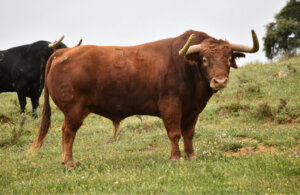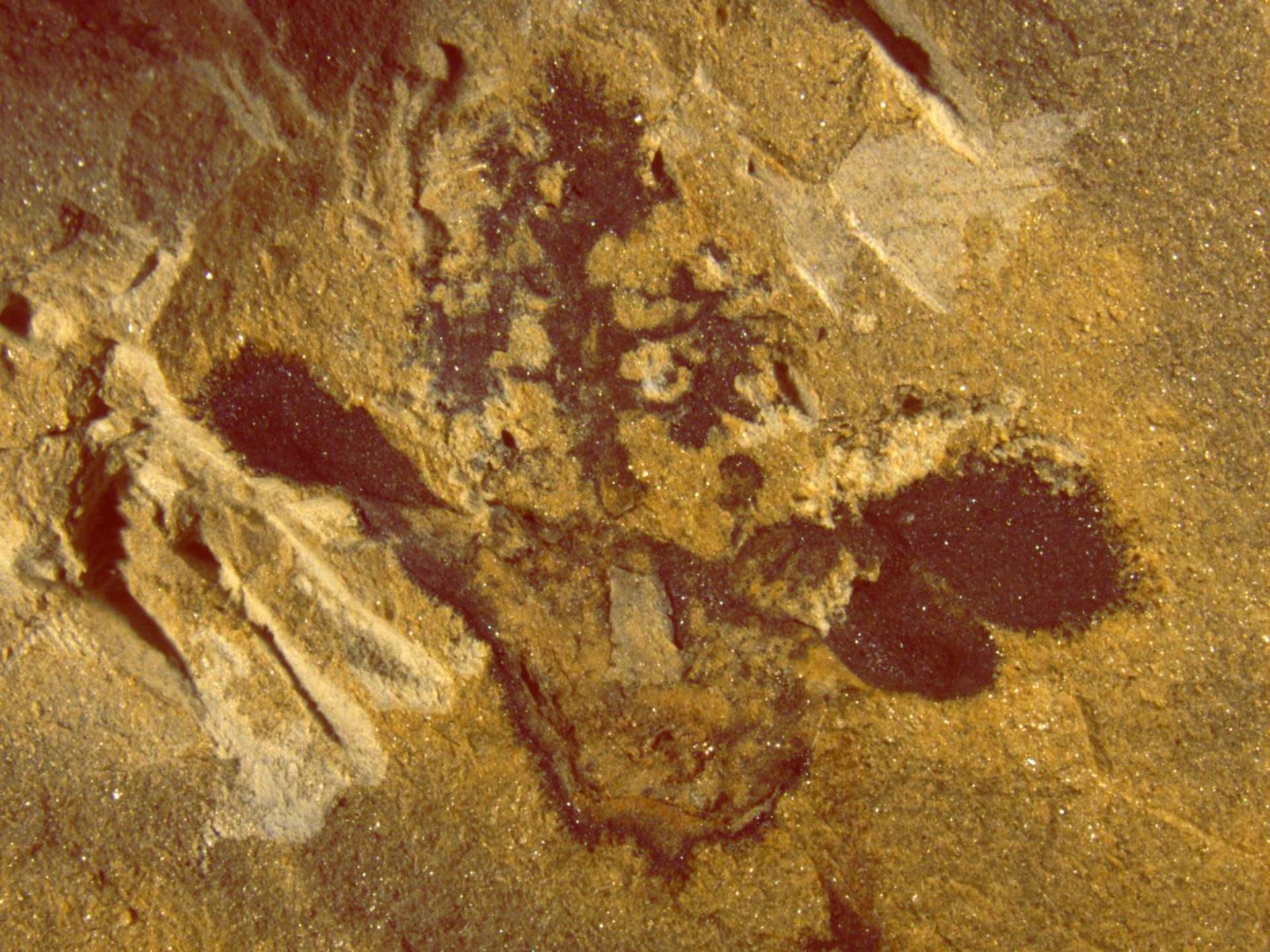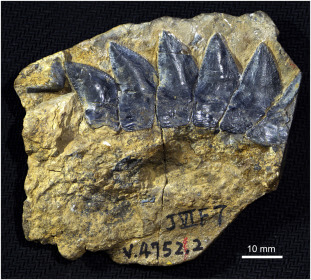Researchers Find Bovine Fossils Dating Back 5200 Years


Written and verified by the biologist Cesar Paul Gonzalez Gonzalez
Bovids (Bovidae) are one of the best-known mammal families in the world, as they include several species of domestic livestock such as cows, goats and sheep. These animals have a great relevance in the economy and in human nutrition. However, part of their evolutionary history is still an enigma. In 2020, a group of researchers analyzed some bovine fossils found on the Tibetan plateau, which date back some 5200 years.
This opened a new panorama and generated new hypotheses about their relationship with the humans of the time. Read on and find out more about it.
Why are there bovine fossils on the Tibetan plateau?
The Tibetan plateau is a vast plain located in East Asia. It is 2500 kilometers (1550 miles) long and has an altitude of more than 4500 meters (14700 feet) above sea level. It is surrounded by the Himalayas and the Kunlun mountain range, so the animals that inhabit it have a restricted distribution.
Although it seems hard to believe, more than 50 million years ago part of the plateau was submerged in the ocean, while the rest was at sea level. As a result, it had a great biological diversity, which was susceptible to fossilization because the water promoted sediment formation.
As time went by, many species were buried at the bottom of the ocean, but were brought to the surface by the collision of two tectonic plates (Indian and Eurasian). This collision forced the emergence of the Tibetan plateau and rescued the numerous fossils in formation from the seabed. For this reason, it now harbors a large number of animal fossils, both terrestrial and aquatic.

What fossils have been discovered on the Tibetan plateau?
The Tibetan plateau harbors fossils from different geological periods. This includes species that existed several thousand years before its formation, as well as specimens that lived after it emerged from the ocean. Although at that point it no longer had large bodies of water, it still had some rivers and lakes on its surface that allowed the fossilization of animals to take place.
In addition, the Tibetan plateau underwent several favorable climatic changes that diversified its flora and fauna, which facilitated the presence of fossils after the collision of plates. Due to its history, it’s possible to find fossilized remains of fish, dinosaurs, Denisovan hominids (relatives of Neanderthals), birds and mammals similar to current species.
The discovery of new bovine fossils on the Tibetan plateau
In 2020, a group of researchers from the Chinese Academy of Sciences, discovered the fossilized remains of what appeared to be unknown bovid species. Although it wasn’t the first time they had come across this type of fossil, this time they decided to clear up any questions and analyze the DNA of the samples.
The researchers were extremely surprised to learn the results, as it turned out to be an ancestor of the gaur (Bos gaurus), a tropical bovid that isn’t distributed in this area. Despite being an unexpected fact, the scientists used the information to suggest a new approach to the history of the emergence of the Tibetan plateau.
According to the specialists, the Tibetan plateau emerged progressively after the collision of the tectonic plates. This means that it reached its maximum height several years after it emerged to the surface. Therefore, its climate underwent changes, but stabilized at some point and allowed for biological diversification.
It’s possible that geographic and environmental variations on the Tibetan plateau caused drastic changes in its temperature. Nevertheless, at least in the late Neolithic period (5200 years ago), it maintained a temperate and humid climate that was perfect for bovids such as the gaur. This is one of the reasons why it is thought that the species managed to establish itself in the area.

Why is the presence of bovids on the Tibetan plateau important?
Between 6000 and 3000 years ago, a curious increase in human colonization of the Tibetan plateau occurred. This event seems to be linked to the development of activities such as cattle breeding and agriculture. The only problem is that these techniques were not mastered until 4000 years ago, so they don’t explain why humans began to settle in this area.
Thanks to the study carried out, the researchers solved the enigma and proposed that humans arrived in the area because of the bovine species. As they were easy to hunt, the population had the resources to grow quickly and settled in the vicinity of the Tibetan plateau. However, the animals’ numbers declined over time, forcing them to rely more on agriculture and animal husbandry.
This means that the presence of bovids on the Tibetan plateau 5200 years ago was crucial for human colonization. Without them, it’s unlikely that Tibetan cultures would have conquered this area and adapted to the subsequent climatic changes.
As you can see, these bovine fossils help us to explain part of the history of living beings and the changes that their environment underwent. Although it’s a complex process that takes several years, specialists work tirelessly to reveal their secrets and learn more about what surrounds us.
Bovids (Bovidae) are one of the best-known mammal families in the world, as they include several species of domestic livestock such as cows, goats and sheep. These animals have a great relevance in the economy and in human nutrition. However, part of their evolutionary history is still an enigma. In 2020, a group of researchers analyzed some bovine fossils found on the Tibetan plateau, which date back some 5200 years.
This opened a new panorama and generated new hypotheses about their relationship with the humans of the time. Read on and find out more about it.
Why are there bovine fossils on the Tibetan plateau?
The Tibetan plateau is a vast plain located in East Asia. It is 2500 kilometers (1550 miles) long and has an altitude of more than 4500 meters (14700 feet) above sea level. It is surrounded by the Himalayas and the Kunlun mountain range, so the animals that inhabit it have a restricted distribution.
Although it seems hard to believe, more than 50 million years ago part of the plateau was submerged in the ocean, while the rest was at sea level. As a result, it had a great biological diversity, which was susceptible to fossilization because the water promoted sediment formation.
As time went by, many species were buried at the bottom of the ocean, but were brought to the surface by the collision of two tectonic plates (Indian and Eurasian). This collision forced the emergence of the Tibetan plateau and rescued the numerous fossils in formation from the seabed. For this reason, it now harbors a large number of animal fossils, both terrestrial and aquatic.

What fossils have been discovered on the Tibetan plateau?
The Tibetan plateau harbors fossils from different geological periods. This includes species that existed several thousand years before its formation, as well as specimens that lived after it emerged from the ocean. Although at that point it no longer had large bodies of water, it still had some rivers and lakes on its surface that allowed the fossilization of animals to take place.
In addition, the Tibetan plateau underwent several favorable climatic changes that diversified its flora and fauna, which facilitated the presence of fossils after the collision of plates. Due to its history, it’s possible to find fossilized remains of fish, dinosaurs, Denisovan hominids (relatives of Neanderthals), birds and mammals similar to current species.
The discovery of new bovine fossils on the Tibetan plateau
In 2020, a group of researchers from the Chinese Academy of Sciences, discovered the fossilized remains of what appeared to be unknown bovid species. Although it wasn’t the first time they had come across this type of fossil, this time they decided to clear up any questions and analyze the DNA of the samples.
The researchers were extremely surprised to learn the results, as it turned out to be an ancestor of the gaur (Bos gaurus), a tropical bovid that isn’t distributed in this area. Despite being an unexpected fact, the scientists used the information to suggest a new approach to the history of the emergence of the Tibetan plateau.
According to the specialists, the Tibetan plateau emerged progressively after the collision of the tectonic plates. This means that it reached its maximum height several years after it emerged to the surface. Therefore, its climate underwent changes, but stabilized at some point and allowed for biological diversification.
It’s possible that geographic and environmental variations on the Tibetan plateau caused drastic changes in its temperature. Nevertheless, at least in the late Neolithic period (5200 years ago), it maintained a temperate and humid climate that was perfect for bovids such as the gaur. This is one of the reasons why it is thought that the species managed to establish itself in the area.

Why is the presence of bovids on the Tibetan plateau important?
Between 6000 and 3000 years ago, a curious increase in human colonization of the Tibetan plateau occurred. This event seems to be linked to the development of activities such as cattle breeding and agriculture. The only problem is that these techniques were not mastered until 4000 years ago, so they don’t explain why humans began to settle in this area.
Thanks to the study carried out, the researchers solved the enigma and proposed that humans arrived in the area because of the bovine species. As they were easy to hunt, the population had the resources to grow quickly and settled in the vicinity of the Tibetan plateau. However, the animals’ numbers declined over time, forcing them to rely more on agriculture and animal husbandry.
This means that the presence of bovids on the Tibetan plateau 5200 years ago was crucial for human colonization. Without them, it’s unlikely that Tibetan cultures would have conquered this area and adapted to the subsequent climatic changes.
As you can see, these bovine fossils help us to explain part of the history of living beings and the changes that their environment underwent. Although it’s a complex process that takes several years, specialists work tirelessly to reveal their secrets and learn more about what surrounds us.
All cited sources were thoroughly reviewed by our team to ensure their quality, reliability, currency, and validity. The bibliography of this article was considered reliable and of academic or scientific accuracy.
- Chen, F. H., Dong, G. H., Zhang, D. J., Liu, X. Y., Jia, X., An, C. B., … & Jones, M. K. (2015). Agriculture facilitated permanent human occupation of the Tibetan Plateau after 3600 BP. science, 347(6219), 248-250. https://www.science.org/doi/abs/10.1126/science.1259172
- Chen, N., Ren, L., Du, L., Hou, J., Mullin, V. E., Wu, D., … & Zhang, X. (2020). Ancient genomes reveal tropical bovid species in the Tibetan Plateau contributed to the prevalence of hunting game until the late Neolithic. Proceedings of the National Academy of Sciences, 117(45), 28150-28159. https://www.pnas.org/doi/full/10.1073/pnas.2011696117
- Deng, T., Wang, X., Wu, F., Wang, Y., Li, Q., Wang, S., & Hou, S. (2019). Implications of vertebrate fossils for paleo-elevations of the Tibetan Plateau. Global and Planetary Change, 174, 58-69. https://www.sciencedirect.com/science/article/abs/pii/S0921818118303564
- Royden, L. H., Burchfiel, B. C., & van der Hilst, R. D. (2008). The geological evolution of the Tibetan Plateau. science, 321(5892), 1054-1058. https://www.science.org/doi/abs/10.1126/science.1155371
- Mao, K. S., Wang, Y., & Liu, J. Q. (2021). Evolutionary origin of species diversity on the Qinghai–Tibet Plateau. Journal of Systematics and Evolution, 59(6), 1142-1158. https://onlinelibrary.wiley.com/doi/full/10.1111/jse.12809
- Chen, F., Welker, F., Shen, C. C., Bailey, S. E., Bergmann, I., Davis, S., … & Hublin, J. J. (2019). A late middle Pleistocene Denisovan mandible from the Tibetan Plateau. nature, 569(7756), 409-412. https://www.nature.com/articles/s41586-019-1139-x
This text is provided for informational purposes only and does not replace consultation with a professional. If in doubt, consult your specialist.








